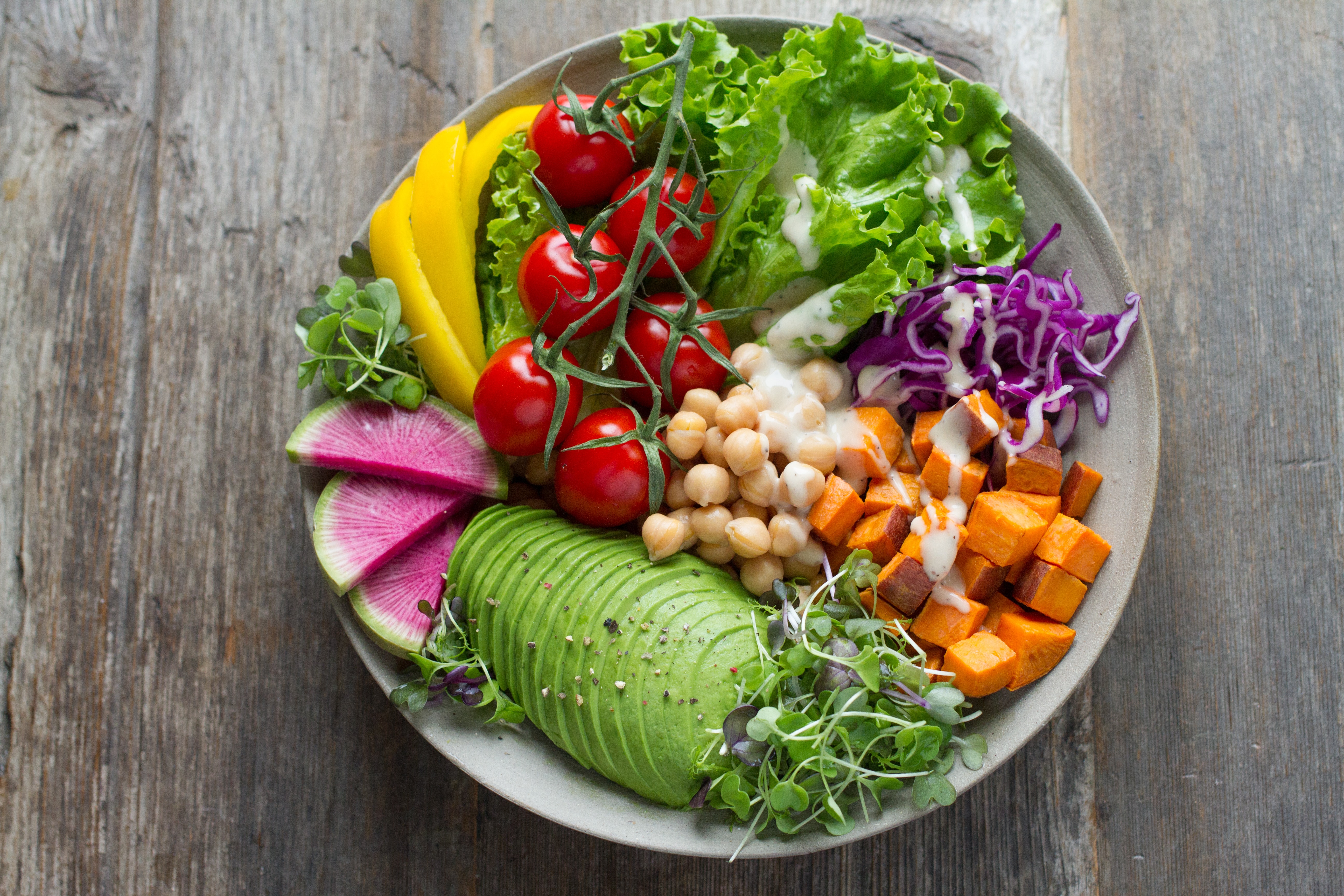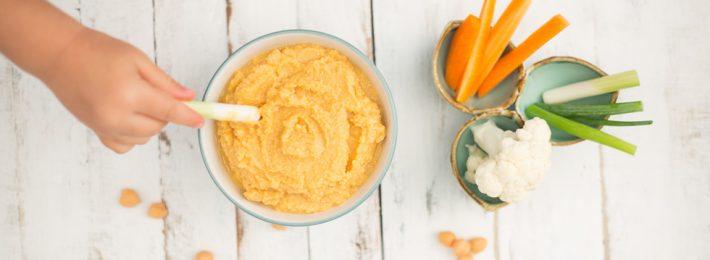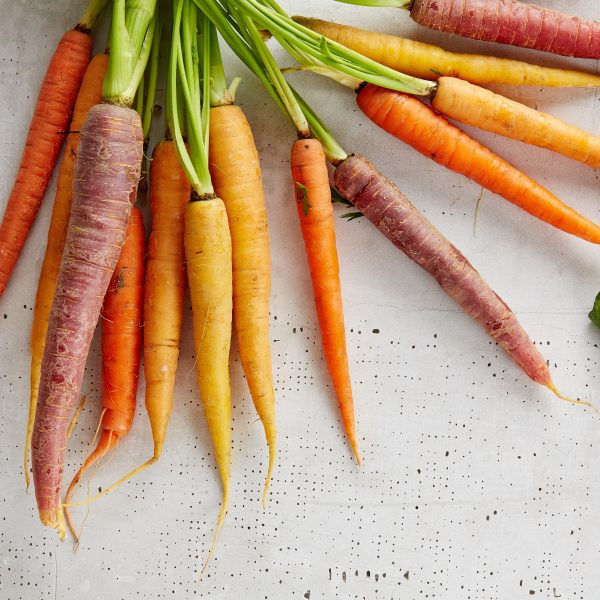Do we play hide and seek with vegetables in children’s meals?

With only 1 in 16 Australian children eating the required servings of vegetables per day, boosting meal offerings in early childhood education and care (ECEC) settings with veggies wherever possible is important to try and positively impact the health and wellbeing of children – but is it ok to do this by hiding vegetables in sauces, muffins, cakes and other foods?
How many serves of veggies should a child be eating?
For children aged between one and four years of age it is recommended that 2.5 serves (or four child-size serves) of veggies are eaten per day. From the ages of five to eight, this recommendation jumps to 4½ adult size serves per day.
Toddlers and young children eat 25 per cent fewer vegetables than babies do, despite the fact that they need significantly more based on their size.
The challenge
Many children turn their nose up at veggies, and it is the number one food group challenge for ‘fussy eaters’ – and around half of all toddlers can be classified as fussy eaters.
Educators, parents, and chefs preparing meals for young children are award that getting the required amount of vegetables into fussy eaters can be tricky, and many will boost recipes with hidden veggies, to ensure children are getting the most nutrition from their food.
However, it is also extremely important to also offer these same veggies to children in their whole state too (either raw or cooked) so that they learn to expect them as part of every day meals.
There is no such thing as too much
I believe that you can never have too many vegetables in a child’s diet, and going over the recommended veggie servings a day is nothing but beneficial. Some of the most successful meals that can be seamlessly supercharged with vegetables are bolognese sauce, pasta sauce and pasta bakes or meatballs. Homemade dips are also a winner!

In the Wholesome Child Nourish Program we guide chefs and cooks to experiment with recipes to boost veggie intake, and provide strategies for educators to encourage little ones to try the dishes being offered up. Some of the key tips to sneak in the veg, and meet the daily requirements, are shared below.
Top 7 Tips for getting children to meet their required serves of vegetables per day:
Cooking with kids. If you have the opportunity to offer cooking experiences in your Setting, it’s beneficial to involve children in the process of adding veggies to their food. Your staff could prepare a muffin with added cauliflower together, and see the surprise on their little faces when they realise that it tastes delicious!
I always encourage getting little ones actively involved in the kitchen as soon as possible. Talking through which ingredients and vegetables are used and why, asking for their help in mashing, blending or laying sliced vegetables out on a baking tray will offer them valuable and incidental insight into how veggies can change form and shape. Allowing them to see how they can alter their own food to make it healthy also helps to set them up with a powerful sense of control, knowledge and awareness.
Start with what they like and build from there.
- Colour: A key strategy is if children only like one vegetable such as carrots or potatoes, to try pureeing similar coloured veggies and adding them in small quantities, for example, sweet potato and carrot, cauliflower and potato, broccoli and zucchini, mashed potato and parsnip, or parsnip chips added to potato chips.
- Taste: If children will only eat sweet foods, I recommend offering sweet root veggies and sweetening with a dash of cinnamon. Sweet potato, pumpkin, butternut and carrot, for example, are naturally sweet and a great place to start.
Grow herbs and veggies
We encourage those who work with children to to get children involved with planting and growing herbs and vegetables – whether it’s a visit to a local community garden, planting seeds in small container and watching them grow or growing them on the premises – all of these activities help to foster and encourage children to enjoy food and explore new flavours.
Stock for the win!
Veggie stocks are an absolute powerhouse of nutrients. Cook up an assortment of veggies, including leek, carrots, onion, parsley and bay leaves and add to any food you’re cooking. You could even boil pasta or rice in veggie stock. Avoid stock cubes as much as possible as they contain preservatives, sugar and excess salt. Instead, freeze homemade vegetable stock into cubes and use at a later date.
Secret Sauce
Hummus, tzatziki, babaganoush, sweet potato relish, tomato sauce and pesto are all a great way to boost children’s veggie intake… accompanied with some veggie dipping sticks to make them more fun and engaging!

Super Smoothies
Children love making smoothies and watching all the ingredients being whizzed together. Using yoghurt as a base, you can add banana, juice of half an orange, blueberries, raw spinach, kale, carrot – and some cooked and cooled pumpkin, zucchini or beetroot. Best part is – once they taste it, they will grow even more adventurous and be asking for a range of ingredients to be added!
Repetition and persistence
I’m a big believer in repeated and consistent exposure to vegetables in all their forms. When a child sees vegetables and salads offered up on a daily basis, they’ll learn to expect to see these foods on the table. This desensitisation, repetition and persistence is a powerful tool – alongside them seeing respected carers or family members eating the vegetables and salads on offer. Positive role modelling and eating together as much as possible are both great ways to encourage veggie intake, eventually removing any need to disguise.
As with everything with little ones and nutrition – persistence and repetition are key, along with a healthy dose of patience and sense of humour! The parents in your community will be so appreciative of your efforts to get them to eat their daily greens – and reds, yellows, purples and browns!
Note: Children with an underlying physiological or sensory sensitivity to textures are more influenced and deterred by textures and can indeed benefit from the inclusion of purees and smoother consistencies used in their meals (alongside intervention from a paediatrician, nutritionist, dietitian, occupational therapist or speech therapist).
Popular

Quality
Practice
Provider
Research
Workforce
Honouring the quiet magic of early childhood
2025-07-11 09:15:00
by Fiona Alston

Quality
Practice
Provider
Research
Taking a leap: Why risky play matters
2025-07-15 09:53:58
by Fiona Alston

Quality
Practice
Provider
Research
Brisbane’s youngest athletes get into the Olympic spirit at Bush Kindy event
2025-07-15 09:00:51
by Fiona Alston












